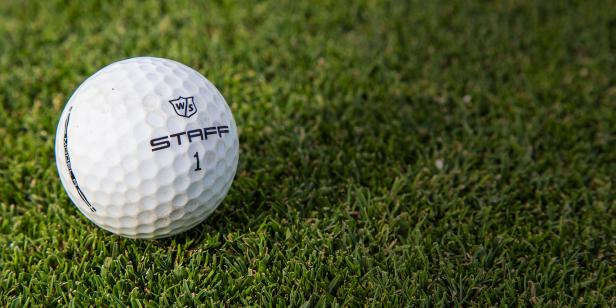Products You May Like
The way the golf ball design team at Wilson looks at it, the worst thing about the best balls being made today might be the only thing you can see. That glossy, white exterior—the paint, or more precisely, the inconsistency of that paint job—might be why your golf ball is missing the target no matter how well you strike it.
The answer for Wilson seems at once obvious and bizarre: Wouldn’t a golf ball be better without the paint? That’s the motivation behind the new Wilson Staff Model R.
“When we were talking about this as a project for Wilson Labs, we were looking at what can we do to make this ball as perfect as possible?” said Frank Simonutti, Wilson’s global director of golf ball innovation. “We do know that one of the most inconsistent parts of a ball, if not the most inconsistent, is the paint coverage. So we decided let’s see what the ball performs like without paint.”
Simonutti said Wilson’s testing showed that “70-80 percent of golf balls had some level of paint inconsistency.” That variable coverage, which could range from excessive pooling in dimples to complete lack of paint, could show balls missing left and right or short and long because of aerodynamic bias. Of course, golf ball dimple patterns typically are designed to accommodate the painting process, which also preserves the ball’s glossy appearance and reduces staining, an area an unpainted ball may have to compromise on. But painting a ball evenly is not a trivial exercise and how uneven that painting process might be across the industry varies, said Bob Thurman, vice president Wilson Labs.
“How frequently does this happen?” said Thurman, who indicated the company’s experiments showed as much as plus or minus 25 feet of deviation on a 200-yard 5-iron shot because of paint inconsistency. “It’s more frequent than you might think. Just like ice on an airplane wing, it’s going to affect the way a ball flies. Is it going to be six inches or six feet or sixty feet? Are you going to take that chance?”
The Staff Model R will retail for $50 per dozen.


